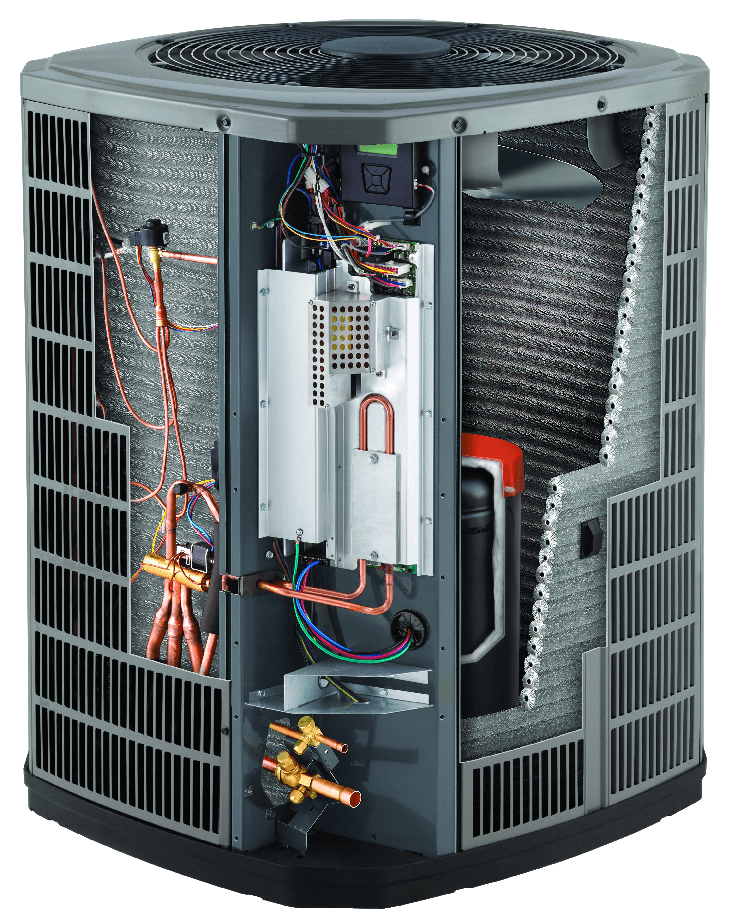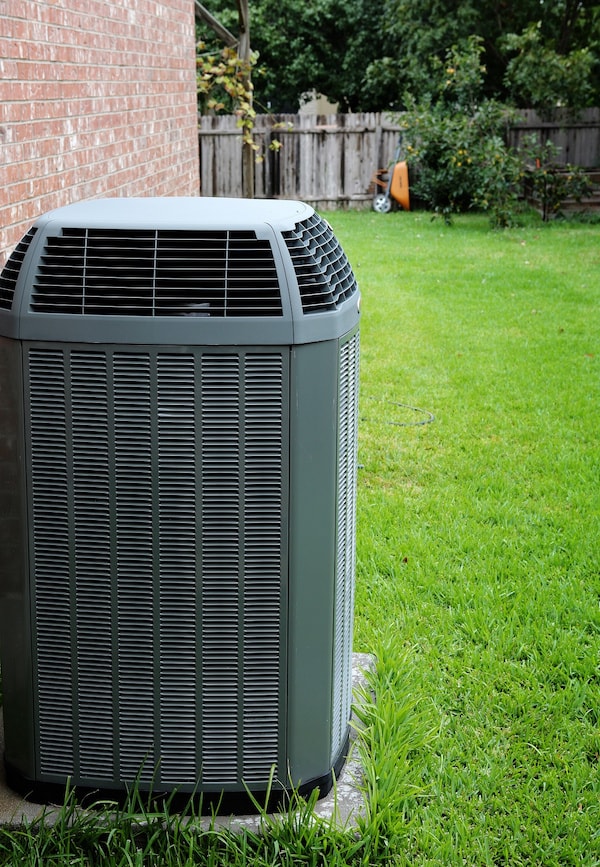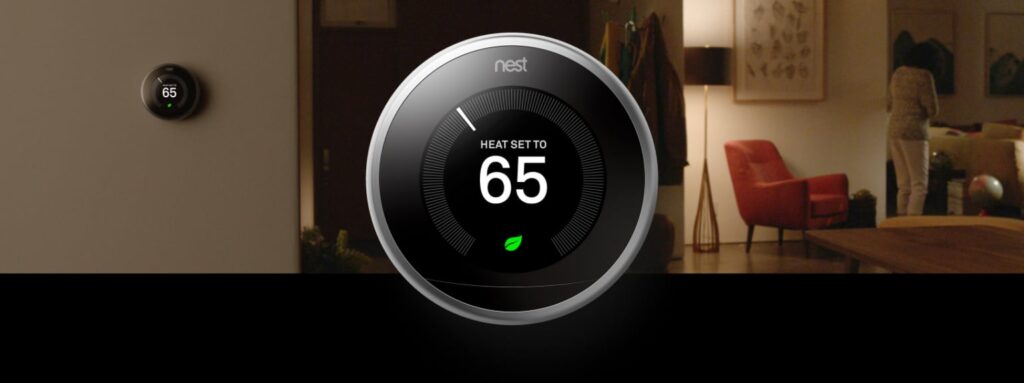Do you ever stop to consider what a modern marvel your home’s HVAC system is? A properly functioning and well-maintained HVAC system provides a level of comfort in your home that past generations could only have dreamed of. With the flick of a switch or tap on your smartphone, a modern HVAC system will keep you cool and dry during hot and humid summers, while shrugging off the worst chills that old man winter can deliver.
But how much do you know about the parts and function of your HVAC (Heating, Ventilating, and Air Conditioning) system? To make smart decisions about purchasing, upgrading, and maintaining an HVAC system, it’s important to understand the fundamentals.
HVAC (Heating Ventilation Air Conditioning) systems keep your home warm in the winter and cool in the summer. An HVAC system is centralized and performs its functions for the entire home, making it different from a home that is heated and cooled with an ad-hoc collection of heaters, window air conditioners, and the like. To accomplish its mission, the central heating and air conditioning units circulate warm or cool air throughout your home via a series of ducts. Let’s take a closer look at the components of typical HVAC systems.
There are a lot of variations in the specifics of HVAC systems, and a lot of options to consider if you’re looking to install or upgrade your HVAC system. Here are the basics that you’ll find in most systems.

Let’s dive into some more detail on each of the components we’ve discussed above.
In an HVAC system, the furnace heats the air that’s circulated throughout the home. An energy source is used to heat the air, then the furnace’s blower motor forces air into the ductwork of your home. Different energy sources are used to heat the air. Here are the four most common energy sources.
Natural gas
Natural gas furnaces are very popular in the United States. Over 50% of American homes heat with natural gas, and the percentage is higher in many regions. Natural gas furnaces are quite efficient, over 90% efficient in newer models. Depending upon the cost of natural gas that can make them extremely efficient. To use a natural gas furnace your home will have to have access to local natural gas lines.
Electric
Electricity is another very common source for residential furnaces. Electric furnaces aren’t as efficient to operate as gas furnaces, but they are usually much more economical to install and have a longer service life than gas furnaces. Your cost to operate an electric furnace will depend upon the local cost of electricity.
Propane
If you don’t have access to natural gas supplies, propane is an attractive alternative. Propane is easily stored in tanks outside your home and delivery options are available nearly everywhere. About 10% of American homes use propane furnaces to heat their home.
Oil
Still relatively common in the northeastern United States, oil furnaces are uncommon in most other regions. Yet they are efficient and relatively inexpensive to install. Oil must be delivered and stored in a tank at your home to operate an oil furnace.
The heat exchanger is a vital part of your furnace. You may think that your furnace works much like a fireplace, with an open flame heating the air that is then sent to ducts that heat your home. In fact, it’s a little more complicated (and a whole lot safer) thanks to the heat exchanger in your furnace.
The gas flame or electric elements that heat the air in your furnace are separated from the air that actually circulates in your home. The heating process takes place in a sealed container, and air is circulated around this chamber to be warmed. This circulation process is accomplished by the heat exchanger.

While the heat exchanger warms the air flowing through your home, these furnace components perform the opposite function — cooling the air that is circulated through your home.
Evaporator coils circulate chemical refrigerant fluids through a series of coils. The expansion and contraction of the refrigerants absorb heat from the inside air. The refrigerants then circulate through an outdoor condensing unit that lets the heat dissipate. The cooled refrigerants circulate back inside to the evaporator coil, where the air is circulated over them and sent into your home to keep you cool and dry during the hot summer months.
HVAC systems that use heat pumps are very common and for good reason. Heat pumps are both efficient and cost-effective because they utilize the difference in temperature between inside and outside your home to both heat and cool your home.
A heat pump circulates fluid between indoor and units using electricity. The contraction and expansion of the fluid in the system can both generate heat or provide cooling. In the winter, the heat pump moves heat from the outside to the inside, and in the summer the process is reversed, as the heat pump moves heat from inside your home to the outside. There are three different types of heat pump systems:
In most cases, heat pumps can’t do the entire job by themselves. The indoor portion of a heat pump-based HVAC system will employ auxiliary heating elements to provide an extra boost to heating when temperatures are very cold. In most cases the elements use electricity, but you’ll occasionally find hybrid systems that employ natural gas for auxiliary heating.
The thermostat is an important part of your home’s HVAC system. It’s responsible for regulating the temperature of your home automatically. Without a thermostat, you’d have to constantly monitor the temperature and turn your heating or cooling systems on and off manually. Thermostat technology has advanced greatly in recent years, so you have a number of different choices available when considering what kind of thermostat you want to control your HVAC system.

Installing a smart thermostat is an excellent way to make your home more energy-efficient and save money. Contact us and we’ll be happy to talk to you about installing a new smart thermostat in your home.
Once the air for your home has been heated or cooled, it must be circulated throughout your home. That’s the job of your ducts and vents. If you were to peel away the interior walls of your home, you’d see a variety of metal boxes and pipes leading from and to your central air handler. Some of these supply air to the HVAC system, while others return the heated or cooled air to the rooms of your home.
For peak efficiency and health, it’s important that the ducts in your home are kept clean and free of leaks. It’s also important to keep the vents that feed air into the rooms of your home free of obstructions so that you enjoy the full benefits of your HVAC system’s work. If your home is older, it’s a good idea to check the condition and integrity of your vents. Learn more about your ducts in this blog post.
Your HVAC system circulates air throughout your home, so it’s perfectly positioned to help clean the air you breathe. Changing the filters in your system regularly will do a lot to keep your air clean, but there are some ways to improve the air-cleaning capabilities of your HVAC system.
It’s easy to ignore your HVAC system — until it starts giving your trouble. To make sure that you stay warm when it’s cold, and cool when it’s hot, it’s a great idea to keep your HVAC system in top condition. Not only will you minimize emergency calls and repairs, but you’ll probably extend the life of your system as well. These five tips will help maintain your HVAC system.
Your home’s HVAC system plays a vital role in your health and comfort. Maintaining your HVAC system and making prompt repairs when necessary is an important part of your home’s regular maintenance.
Therefore, it’s a smart idea to have regular inspections of your home’s HVAC system done by qualified professionals. At Team Enoch, we take pride in our workmanship and have the experience and know-how to not only fix HVAC problems but catch potential issues before they happen. Our membership plans offer preventative maintenance and inspection programs to help you keep your system in top condition.
If you're in the Dallas Fort Worth area and got a problem with your HVAC system or are considering an upgrade, contact us today and we’ll be happy to talk to you. Remember, estimates are always free!
